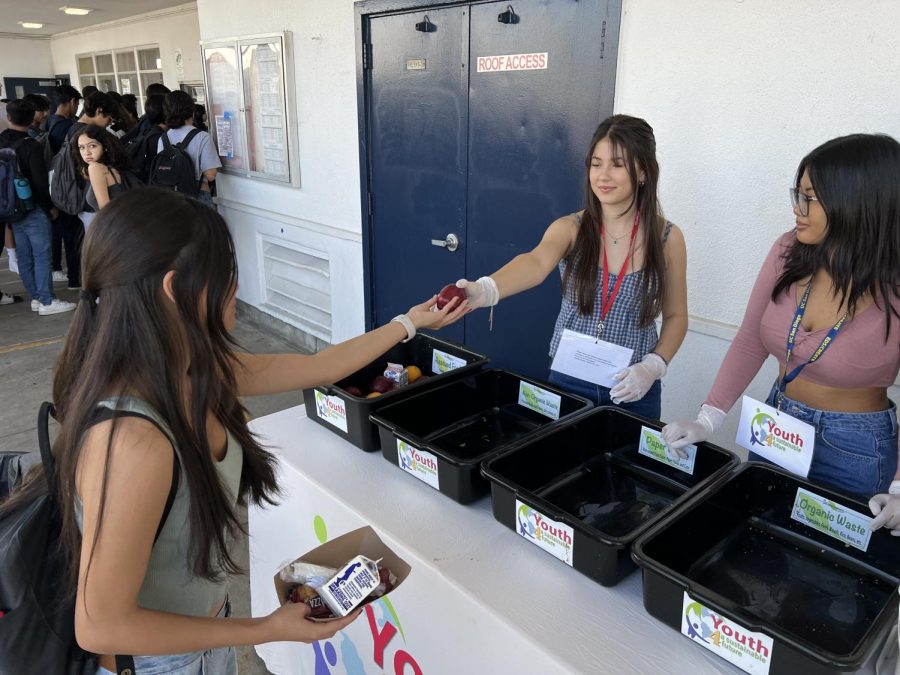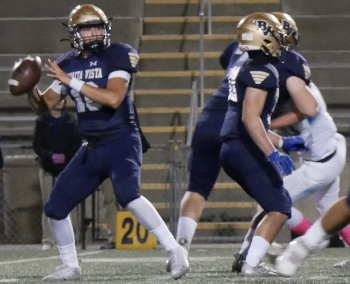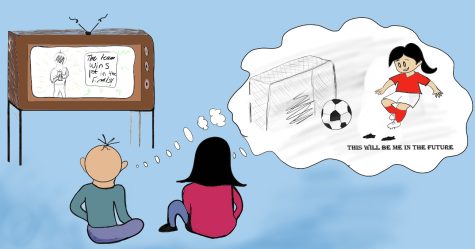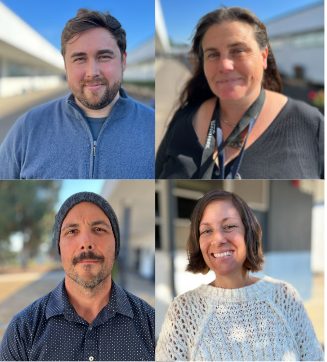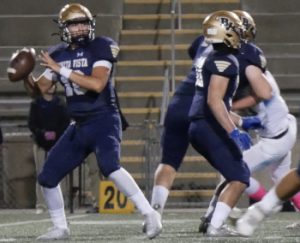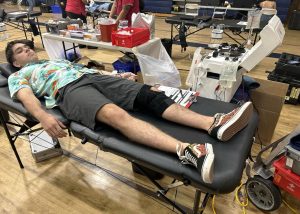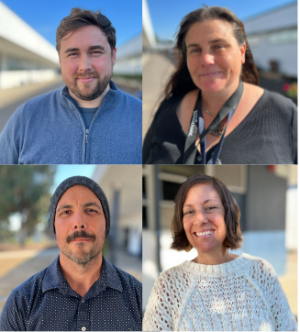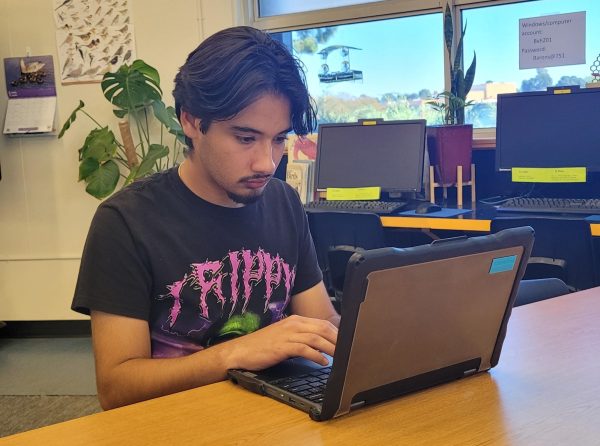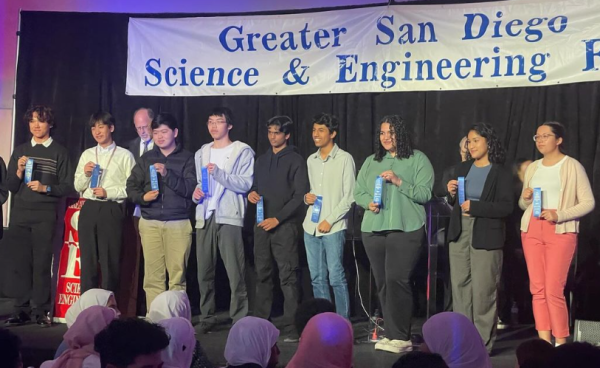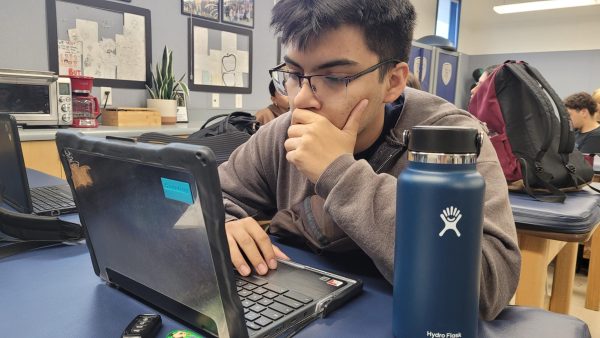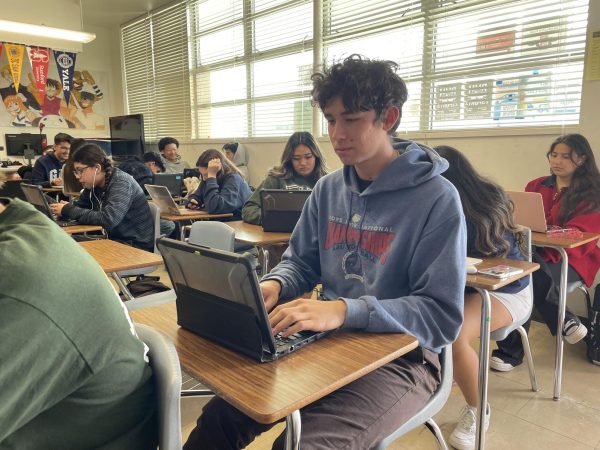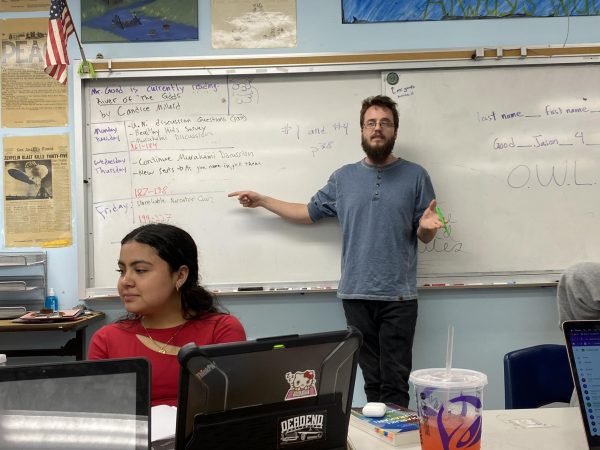Putting waste in the right place
BVH community works to reduce the amount of waste on campus
During lunchtime, Bonita Vista High Youth 4 Sustainability comes together to sort and collect food waste. Volunteers aid the disposal stand as others go around the lunch tables asking for unwanted food items.
As students walk around Bonita Vista High (BVH), they encounter floors filled with litter. Day after day, students leave trash in unnecessary places. Though, at BVH, there are many teachers and students who advocate for a cleaner campus.
“I see, as a student walking around, that there is a lot of trash, a lot of fruit, just laying around the school,” Youth for Sustainability (Y4S) student leader and junior Miguel Rodriguez said. “Even though there’s a lot of trash cans around, it’s kind of obvious to see that people are not throwing away things properly.”
Rodriguez is not the only student who is aware of this issue. Co-president of Y4S and sophomore Victoria Takaki aims to educate the student population about this problem. She explains how Y4S collects cafeteria food and sorts it for people who need it, rather than it just becoming waste.
“If we see someone putting an apple in the trash, we will mention to them, ‘we have these buckets over here, can you please place it over here so it can be redistributed to people who need it,’” Takaki said.
Accelerated biology and International Baccalaureate (IB) Environmental Systems teacher Jennifer Ekstein created Youth for sustainability because she saw that students were not disposing of waste properly. She strongly believes that students need proper guidance in order to keep our campus as beautiful as possible.
It’s much nicer to be in an environment that’s clean and that you feel like people care about.
— Accelerated biology and International Baccalaureate (IB) Environmental Systems teacher Jennifer Ekstein
“It’s about mentoring and educating students that they need to separate specific items like plastic and paper, and even food waste to ensure that we divert it from landfills, which reduces climate change,” Ekstein said.
At home, Ekstein makes sure to recycle properly. She recycles plastic forks and spoons, uses reusable bags and brings her own cutlery to school daily. She encourages all students to reduce the amount of waste there is on campus.
“The big thing is trying to shift the culture of what’s coming out of the cafeteria, our next thing is making sure that they’re not using as much plastic,” Ekstein said.
Advanced Placement (AP) Environmental Science teacher, Adrienne Marriott also noticed the displacement of waste. She describes the many occasions in which waste is not thrown in the correct place. She shares her thoughts about how students don’t sort out their trash.

“I do notice that sometimes things are not put in the recycle bin and especially when I’m out and around campus looking at just the large sized trash cans, I see a lot of stuff just mixed up in there,” Marriott said.
Marriott, in addition to recycling in her classroom, contributes to a cleaner campus in a variety of ways. She has her students pick up trash when necessary and is starting to create mobile gardens. She believes that if the campus looks nicer, students would be more willing to keep it cleaner.
“We’re all here for eight hours a day. It’s much nicer to be in an environment that’s clean and that you feel like people care about. I don’t want to spend time where there’s garbage blowing around all over the place, that all ends up in the storm drains and in the ocean, which is not just bad for us, but bad for the environment as well,” Marriott said.
Ekstein brings in a unique perspective on the situation. She believes that what students do in high school, eventually transcends into adulthood and to their communities. Ekstein claims that when students sort their waste, it creates a ripple effect which influences other students. She believes that juniors and seniors must make efforts to teach younger generations how to take care of their environment.
“Everybody learns, everyone participates, the word spreads and more people start doing it,” Ekstein said.
Students and staff come together to improve campus cleanliness at BVH as trash remains a persistent issue. As students are eager for this to become a reality, it calls for everyone’s participation at BVH.
“This is our home away from home, this is our second house so we just want to keep it nice and tidy,” Takaki said.

I am currently a freshman here at Bonita Vista High and a first-year staff member of The Crusader. This year, I am a Podcast Manager. I am looking forward...

I am a junior at Bonita Vista High and this is my first year on staff for the Crusader. This year I am a photographer. I became a member of the Crusader...

